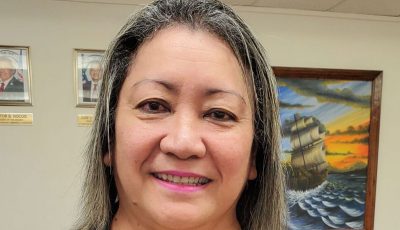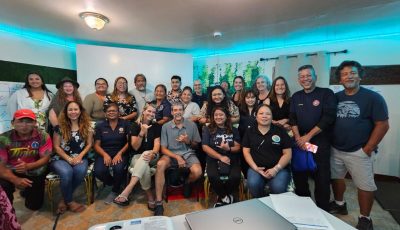CHCC releases community health needs assessment
The Commonwealth Healthcare Corp. has released its community health needs assessment of Saipan, which provides a picture of the health problems created by Typhoon Soudelor.
CHCC’s needs assessment was conducted from Aug. 13 to 19 on all major villages of Saipan and surveyed more than 500 households. It was voluntary and names were not taken.
Heads of households were interviewed for 10 to 15 minutes on key themes such as demographics description and domestic arrangements, disability and welfare, health, services, and environment.
Warren Villagomez, CHCC Public Health and Hospital Emergency Preparedness Program director, told Saipan Tribune that the survey results would be used to better prepare for future calamities so that CHCC could respond faster.
“There are many illnesses, dangers, and health hazards after the typhoon so we have a team that is conducting a survey that will help us in identifying specific needs that the community is at risk from,” Villagomez said.
Results
About 52 percent that were interviewed were Chamorro, 24 percent were Filipino, 16 percent were Carolinian, while majority of the rest were “others.”
About 532 people reported staying in 110 households on the night before Typhoon Soudelor hit. About 316 individuals of these individuals ranged in age from 18 to 64 years old, 164 were from 3 to 17 years old, 28 were from 2 and below, and 25 were from 65 years old and above.
At the time the survey was conducted, around a third of households had no sufficient water or food for three days.
Some 35 percent said that they didn’t have enough food while 65 percent had enough and 3 percent didn’t respond to the question.
Some 30 percent said they didn’t have enough drinking water, while 70 percent said they had enough.
About 89 percent of the respondents continued to live at home after Soudelor while 11 percent were not living at home or their house was uninhabitable.
Nearly a quarter of households interviewed reported having physical or developmental disabilities. Only 2 percent encountered violent behavior; 95 percent didn’t, while 14 percent didn’t answer.
Rash was the greatest acute health symptoms and clinical signs recorded, with 30 instances of non-febrile rash reported. Some 26 percent had severe headache with dizziness, and 22 percent had cough with fever.
CHCC attributed the rash to the lack of running water.
For chronic health, 53 percent of households reported having occupants with hypertension, 35 percent had diabetes, 21 percent had asthma, 14 percent had physical disability, 9 percent had developmental disability, and 1 percent mental health issues.
Priority, challenges
Among the recommendations, priorities, and challenges outlined to improve public health response in the event of a disaster include:
– Reaching out, meeting community and mental and emotional health needs
– Re-establishing existing chronic health care management practices
– Encouraging community cleanup to remove flying debris injury hazards
– Strengthening core public health infectious disease early warning surveillance
– Promoting food, water safety, and personal hygiene and good practices
– Building disease response and outbreak investigation capacity
– Updating arboviral disease management standard operating procedures
– Establishing sustainable workforce capacity, capability in core public health disease surveillance and response activities to meet ongoing business-as-usual, and future disaster pre-preparedness contingencies.



























